SUMMARY
This is AI generated summarization, which may have errors. For context, always refer to the full article.
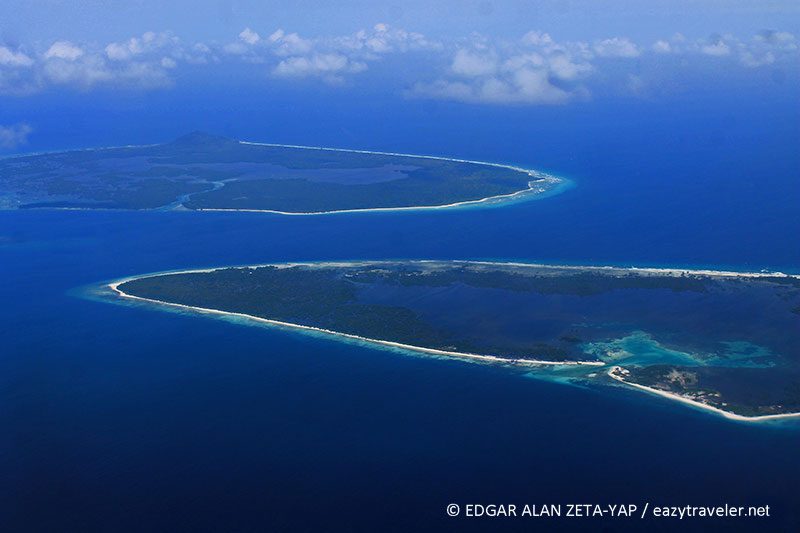
A fisherman told me to snorkel past the village jetty to admire an extensive growth of coral that he said looked like “big plates.” The table coral was more impressive than described, descending towards the drop-off like the undersea counterpart of Balinese rice terraces.
I floated across the vibrant reef. Posses of purple-eyed cardinalfish peered from their underwater patios, while countless blue-green chromis zigzagged through their refuge of labyrinthine tree-like coral. Now and then, a shy Moorish idol or butter-colored butterflyfish would grace the remarkable scenery with its striped elegance, before ducking behind a bulbous head of coral.
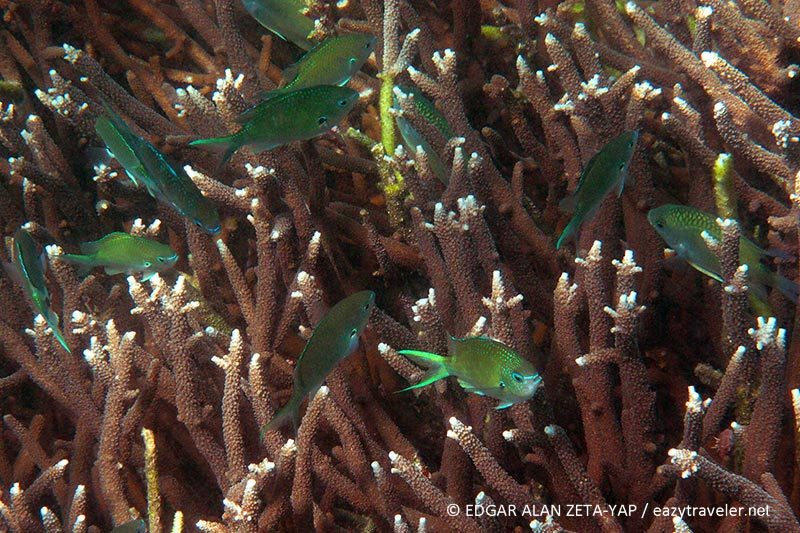
The buzzing sound of a passing jungkung – the local wooden-hulled boat – prompted me to surface. I removed my mask and snorkel, treading in calm, turquoise water. A white-sand beach lay before me, stretching away along a row of coconut trees from an abandoned hut on stilts that leaned in submission to the sea.
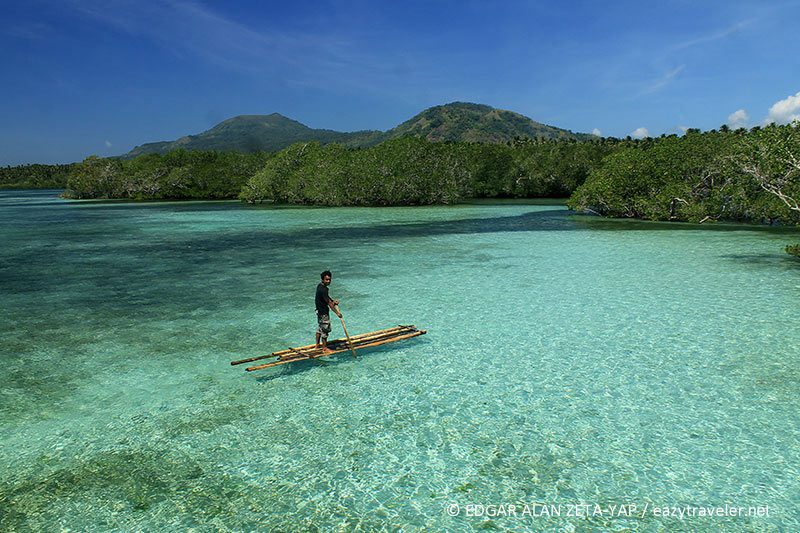
This beach wouldn’t be out of place in Palawan or Bohol – but then I noticed a man in military fatigues, armed with an M-16, watching over me from the hut’s doorway. A small, pale yellow mosque beneath the coconuts called out afternoon prayers.
I recalled that this was not simply another tropical holiday in the Philippines. I was in Sulu – the archipelagic province that stretches halfway between Mindanao and Borneo – accompanied by 4 Marine escorts to ensure my safety in the islands of Hadji Panglima Tahil, 20-minutes by boat from the provincial capital of Jolo.
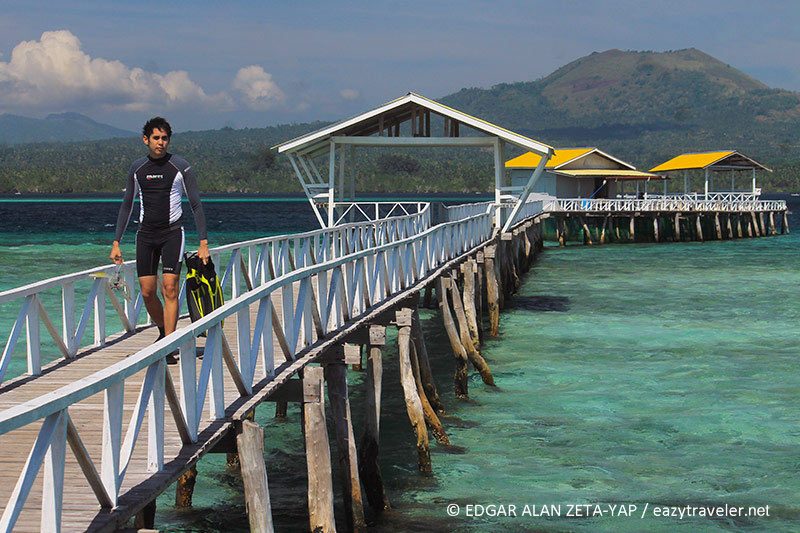
Unfortunately, centuries of socio-political violence and, in more recent decades, armed conflict and kidnappings have scarred this paradise with a rather mellifluous-sounding name. And the very few tourists who do make it here must take extra precautions when exploring the islands. My security detail to Hadji Panglima Tahil – relatively the most peaceful among the 19 municipalities – wasn’t as severe as the one that toured us around Maimbung, a southern town formerly occupied by bandits.
Fourteen Marines escorted me and fellow travel blogger Gay Mitra-Emami of pinaytraveljunkie.com (who joined the first 4 days of my trip) aboard a 25-foot speedboat around Maimbung Bay. It is here that we first recognized the natural wealth of Sulu.
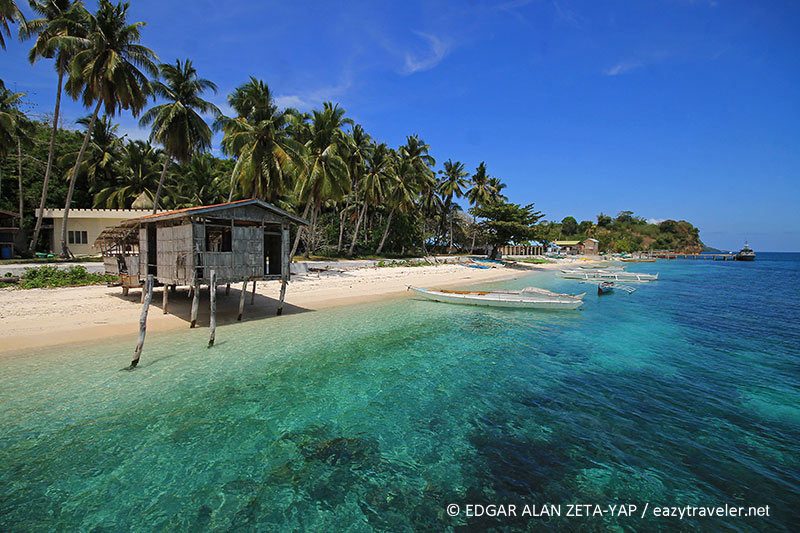
“Its landscape is raw and relatively unexploited,” Gay mused, “If only the situation were better…”
Walking on a mangrove boardwalk over crystal waters, Bualu Bat Sanctuary was an impressive refuge for giant flying foxes, some of the largest bat species with wingspans that can reach almost 4 feet!
We also visited the virgin white-sand island of Teomabal and the governor’s private resort built on stilts over the coral-fringed sandbars of Takut Islets, where my travel companion says she could sit down and do nothing for hours.
In comparison, the islands of Hadji Panglima Tahil still have more tourism potential, owing to its proximity to the capital town of Jolo, which is served by flights and overnight ferries from Zamboanga City.
The atoll-like islands are ringed with beaches and covered with saltwater marshes and lagoons in the middle. The villagers build their homes on stilts at the edge of the islands over tidal flats and sandbanks.
Rickety footbridges link the communities together, and with the hilly terra firma that punctuate the islands. Most notably, the stilted walkway connecting the hamlet of Sitio Likud to the town center of Bangas on Marungas Island is a whopping 800 meters long — that’s more than twice the length of what is dubbed “the longest wooden footbridge in the country” in Surigao del Norte.
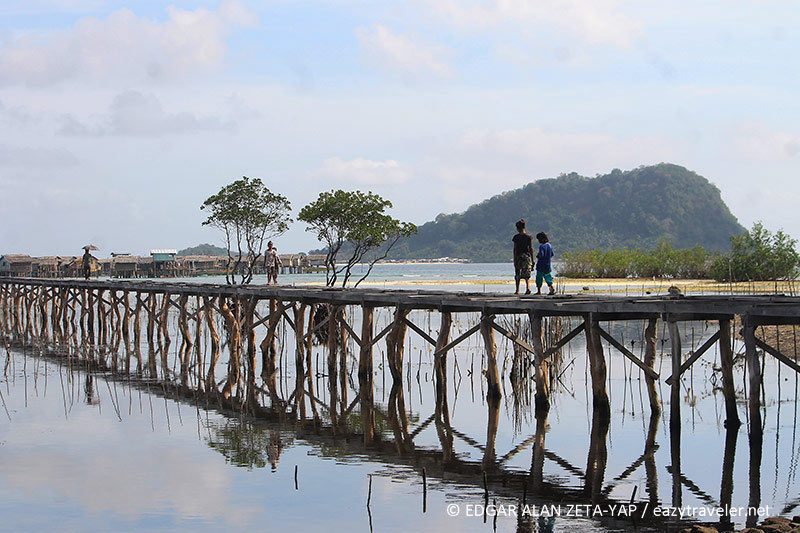
Without a doubt, Sulu should be an overwhelming source of pride not only for its inhabitants but also for all Filipinos. As an eco-cultural treasure waiting to be discovered when peace and order prevails, these southern isles are truly the country’s best-kept secret, if not its most fiercely guarded.
TRAVEL ADVISORY
Due to socio-political unrest, armed conflict and kidnappings in some areas in Sulu, all travelers are required to seek the assistance from the provincial tourism office beforehand for their safety and security. Exploring the province safely and responsibly entails being escorted by the military.
While there are a few traveler inns in Jolo town, military camps offer safer – and more scenic – accommodations, especially at Camp Bud Datu and Mt. Bayug Eco-Cultural Park in Indanan and Talipao, respectively. Staying at the camps can be arranged through the provincial tourism office.
Note: The essay above is traveler Edgar Alan Zeta-Yap’s account of his trip to Sulu, which has a history of political conflict, and has been included in some foreign countries’ travel advisories about the Philippines.
 Edgar Alan Zeta-Yap is a freelance travel writer and photographer from Cebu City, Philippines who blogs at eazytraveler.net. Armed with an appetite for adventure, he enjoys volcano trekking, scuba diving and feasting on durian.
Edgar Alan Zeta-Yap is a freelance travel writer and photographer from Cebu City, Philippines who blogs at eazytraveler.net. Armed with an appetite for adventure, he enjoys volcano trekking, scuba diving and feasting on durian.
Add a comment
How does this make you feel?
There are no comments yet. Add your comment to start the conversation.